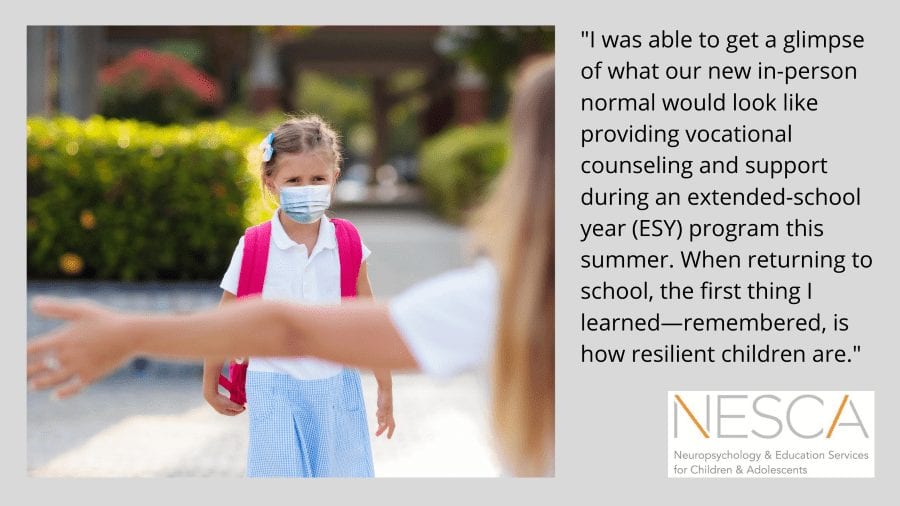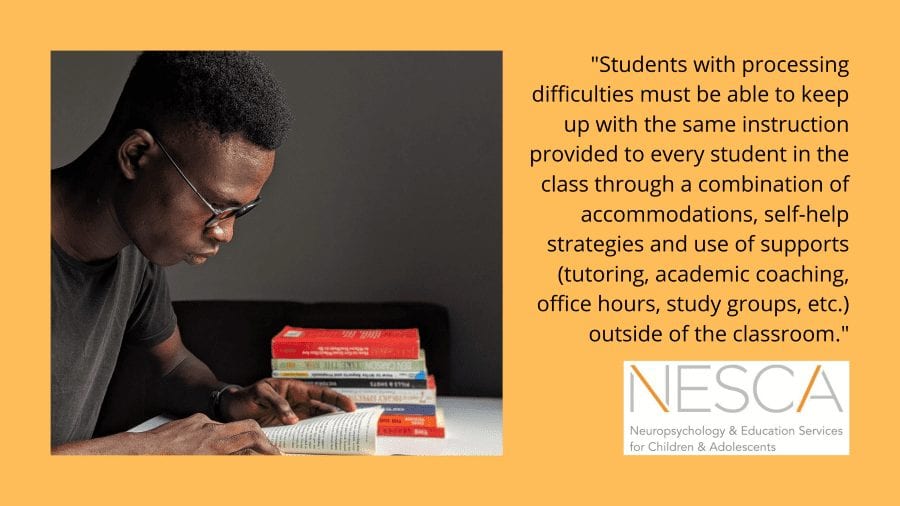
 By: Kelley Challen, Ed.M., CAS
By: Kelley Challen, Ed.M., CAS
Director of Transition Services; Assistant Director, NESCA
Due to Covid-19, many schools are functioning in a hybrid or remote learning status, making access to school-based guidance counselors, college counselors and transition personnel more complicated. Consequently, I am working with an unusually high number of high school students and families to provide assistance with the college selection and admissions process this year. For these students and others, working with a private transition specialist or college consultant/coach provides the structure and consistent support needed to ensure the student is able to find colleges that will be a great match, highlight the student’s strengths as a college applicant and complete the application process efficiently. Most importantly, the added support reduces anxiety—which is a natural response to the college process as well as living through a pandemic.
There are so many factors to consider when choosing a college—size, religion, location, tuition and fees, availability of internships, academic support, etc.—and one of the most important differentiating factors is often the availability of majors that a student is interested in. As such, career exploration is a very important part of my work with college-bound students. There are certainly many online resources that are useful for career exploration—YouScience, O*NET OnLine, Naviance, Khan Academy, Dr. Kit, CareerOneStop, etc.—but my personal favorite site to help teenagers learn to use is MassHire Career Information System (Previously MassCIS; https://portal.masscis.intocareers.org/).

MassHire CIS is a portal that any individual, from middle school to adulthood, can access for free by logging in with their Massachusetts City or Town Name and their Zip Code. Once inside, users can complete assessments related to their interests, skills and values, preferred lifestyle and more. The site also allows students to link results from previously taken career assessments to information about occupations and occupation categories within MassHire CIS.

Using career interests, from assessments or just a self-reported interest (e.g., photographer, elementary school teacher, personal trainer), users can research occupations and find out everything from the tasks associated with the occupation, to helpful high school courses that relate to the job, and expected future wages and occupational outlook. Users can also watch videos to learn more about occupations.

Importantly, users can easily click from careers of interest to programs of study and ultimately to Massachusetts Schools or other US Colleges and Universities that offer majors leading to occupations of interest.

MassHire CIS is one of my favorite resources to share with teens, young adults and families as part of a college transition process—but also when students are building career awareness at other times or seeking a different path to employment. I hope that by spotlighting this in my blog, more families, educators and professionals will also explore and adopt this resource as a favorite!
About the Author:
Kelley Challen, Ed.M., CAS, is NESCA’s Director of Transition Services, overseeing planning, consultation, evaluation, coaching, case management, training and program development services. She is also the Assistant Director of NESCA, working under Dr. Ann Helmus to support day-to-day operations of the practice. Ms. Challen began facilitating programs for children and adolescents with special needs in 2004. After receiving her Master’s Degree and Certificate of Advanced Study in Risk and Prevention Counseling from Harvard Graduate School of Education, Ms. Challen spent several years at the MGH Aspire Program where she founded an array of social, life and career skill development programs for teens and young adults with Asperger’s Syndrome and related profiles. She additionally worked at the Northeast Arc as Program Director for the Spotlight Program, a drama-based social pragmatics program, serving youth with a wide range of diagnoses and collaborating with several school districts to design in-house social skills and transition programs. Ms. Challen is co-author of the chapter “Technologies to Support Interventions for Social- Emotional Intelligence, Self-Awareness, Personality Style, and Self-Regulation” for the book Technology Tools for Students with Autism. She is also a proud mother of two energetic boys, ages six and three. While Ms. Challen has special expertise in supporting students with Autism Spectrum Disorders, she provides support to individuals with a wide range of developmental and learning abilities, including students with complex medical needs.
Neuropsychology & Education Services for Children & Adolescents (NESCA) is a pediatric neuropsychology practice and integrative treatment center with offices in Newton, Massachusetts, Plainville, Massachusetts, and Londonderry, New Hampshire, serving clients from preschool through young adulthood and their families. For more information, please email info@nesca-newton.com or call 617-658-9800.








 By:
By: 
 By:
By: 

 By:
By:  By:
By: 
Connect with Us